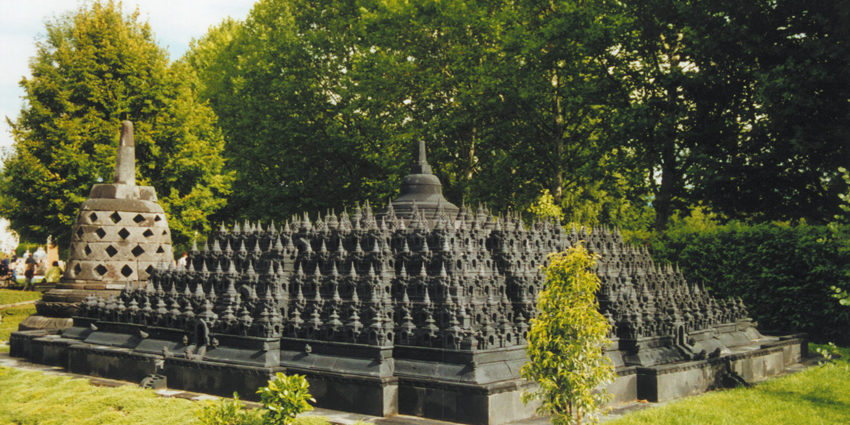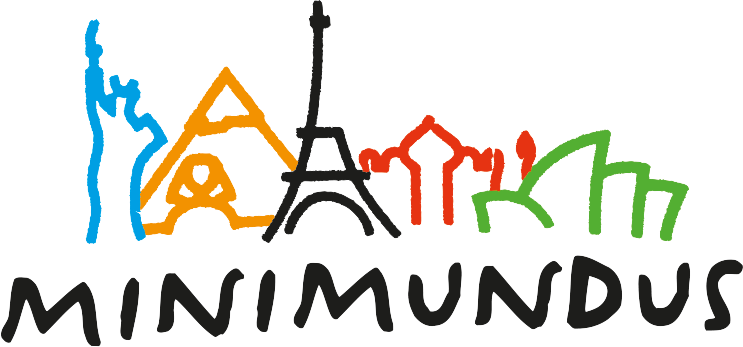The Temple of Borobudur, a Buddhist shrine, towers above the Kedu plain on the Southeast Asian island of Java. Built during the Sailendra dynasty in about 800 AD, this sacred building was once a place of ancestor worship and meditation. The quadrangular base with sides of 112 m and a height of 31.5 m is made out of blocks of basalt and other volcanic stone fitted together without mortar and resembles a stepped pyramid. The Borobudur was built on and over a natural hill so it has no interior space. The upper part consists of three plain round terraces with 32, 24 and 16 stone bells or stupas and a giant bell, the central stupa. The 3-part division may represent the underworld, earthly world and celestial (heavenly) world of Buddhism. The stone bell stands for the cosmic womb (Garbha) and also the cosmic egg (Brahmanda). In the early 1970s the temple was restored with the help of funds from UNESCO and it was added to UNESCO’s list of World Cultural Heritage sites in 1991.

